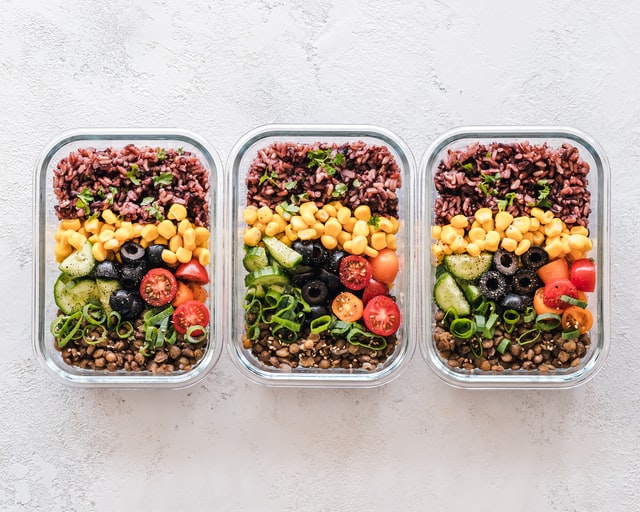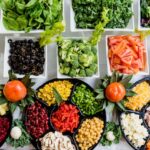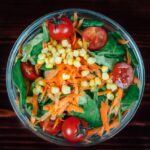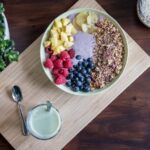Luckily, the majority of people who hate cooking don’t hate the process of cooking in itself. It takes time to shop for fresh ingredients and cook meals from scratch. In addition, fast food delivery are both expensive and unhealthy options. However, there are still ways to eat healthy even if you hate cooking. Read on to learn about some of the best options for those who don’t enjoy the kitchen.
Pre-made and packaged food are healthier choices
It is not always easy to make healthy meals from scratch, but there are plenty of pre-made and packaged options to choose from. Many of these foods contain lots of protein and are low in saturated fat. They are also high in antioxidants and have essential nutrients. Eggs, for example, are a quick way to get your protein and omega-3 fatty acids, and are a delicious addition to smoothies and stir-fries.
Another healthier choice when you don’t want to cook is to order take-out. Many restaurants feature special “healthy” symbols on their menus, and a few good tips for ordering healthy takeout are to order skinless, lean meat and a side salad. For dessert, you can skip the calorie-laden chocolate bars and ice cream. These are great alternatives to fatty and greasy food.
Using frozen meals
Cooking is not for the faint of heart. Frozen meals can be a healthy and convenient alternative to a full meal every night. Cook large batches of your favorite recipes and freeze them for use during the week. If you’re like most people, you might even like cooking, so make a large batch of the same recipe and enlist the help of family members. This way, you’ll always have plenty of food on hand.
Some frozen meals contain too much sodium, which is over a fourth of the recommended daily allowance. Other common problems include preservatives and a strange odor or flavor. The price of these meals may not be inexpensive either. The cheapest options often don’t have the nutritional value that you’d like. Frozen meals are not the only way to eat healthy, though. To make them yourself, use a simple recipe, preferably one that contains only three or four ingredients.
You can even eat more vegetables than you would with a typical frozen meal. Most contain vegetables and are high in fiber. The macronutrients in a frozen meal should be balanced and healthy for your body. A balanced macronutrient will keep you feeling full longer. The sodium content should be under 900 milligrams for each serving. Aim for zero added sugar. If you’re not a fan of cooking, using frozen meals may be a convenient option for you.
If you don’t like to cook, frozen vegetables and fruits are an easy, convenient option. Most of these meals are flash-frozen after blanching. They offer convenience while retaining nutrient levels that are similar to those in fresh produce. Fortunately, frozen foods with healthy ingredients are now more affordable than ever. You can also freeze individual portions of your meal, making them healthier and convenient for the busy person.
How to Eat Healthy Even If You Hate Cooking
In a world dominated by fast-paced lifestyles and hectic schedules, the prospect of preparing elaborate meals can be daunting, especially for those who have a disdain for cooking. The good news is that a distaste for the kitchen doesn’t have to translate into an unhealthy diet. With strategic planning, smart choices, and a bit of creativity, it’s entirely possible to eat healthily even if you hate cooking. This comprehensive guide explores practical tips, alternative options, and simple strategies to help you maintain a nutritious and satisfying diet without spending hours in the kitchen.
**1. Embrace Simple and Quick Recipes:
- One-Pot Wonders: Opt for recipes that require minimal cooking and cleanup. One-pot dishes, such as stir-fries, soups, or sheet pan meals, allow you to throw everything together and let the oven or stove do the work.
- Salads and Raw Options: Explore the world of salads, which can be as diverse and satisfying as any cooked meal. Experiment with different vegetables, proteins, and dressings to keep things interesting. Additionally, consider incorporating more raw foods like fruits, veggies, and nuts into your diet for simplicity and nutrition.
- No-Cook Recipes: Seek out recipes that require no cooking at all. From refreshing salads to smoothie bowls and overnight oats, these no-cook options provide a convenient and healthy alternative for those averse to the kitchen.
**2. Strategic Meal Prepping:
- Batch Cooking: Dedicate a specific day or time to batch cooking. Prepare larger quantities of simple dishes that can be portioned and stored for the week. This minimizes the frequency of cooking sessions and ensures you always have a nutritious meal ready to go.
- Freezer-Friendly Meals: Explore freezer-friendly meal options. Prepare extra servings of your favorite dishes and freeze them in individual portions. This way, you can defrost and enjoy a homemade meal without the need for daily cooking.
- Pre-Cut and Prepped Ingredients: Leverage the convenience of pre-cut and prepped ingredients. Many grocery stores offer pre-chopped vegetables, pre-marinated proteins, and other time-saving options that can significantly reduce the effort required for meal preparation.
**3. Explore Healthy Convenience Options:
- Ready-Made Salads and Wraps: Supermarkets often carry a variety of pre-made salads, wraps, and other healthy options. While some may require minimal assembly, they eliminate the need for extensive cooking. Check ingredient labels to ensure they align with your health goals.
- Prepared Protein Options: Incorporate lean protein sources that require minimal cooking. Pre-cooked rotisserie chicken, canned tuna, or plant-based protein alternatives can be easily added to salads, sandwiches, or wraps.
- Healthy Frozen Meals: Keep a stash of healthy frozen meals on hand. Many brands offer nutrient-rich options with whole-food ingredients, providing a convenient alternative for days when cooking feels overwhelming.
**4. Simplify Your Grocery List:
- Focus on Staples: Build your grocery list around staples that require minimal preparation. Items like whole grains, canned beans, frozen vegetables, and healthy fats can be combined in various ways to create simple and nourishing meals.
- Fresh and Pre-Cut Produce: Prioritize fresh produce that requires little to no prep. Stock up on pre-cut fruits and vegetables, salad greens, and other items that can be easily incorporated into meals without extensive cooking.
- Healthy Snack Options: Include healthy snacks on your grocery list. Nutritious options like Greek yogurt, hummus, pre-cut veggies, and whole fruit can serve as quick and satisfying snacks, reducing the reliance on more elaborate meals.
**5. Utilize Kitchen Gadgets and Appliances:
- Microwave Magic: The microwave can be your ally in quick and easy meal preparation. From steaming vegetables to reheating leftovers, it’s a versatile tool that requires minimal effort.
- Slow Cooker and Instant Pot: Invest in a slow cooker or Instant Pot. These appliances excel at turning simple ingredients into flavorful and hearty meals with minimal hands-on time. Set it and forget it until your meal is ready.
- Blender for Smoothies: Harness the power of a blender for nutrient-packed smoothies. Simply toss in fruits, vegetables, liquid, and your choice of protein for a quick and satisfying meal or snack.
**6. Focus on Nutrient Density:
- Choose Nutrient-Rich Foods: Prioritize nutrient-dense foods that provide a wealth of vitamins, minerals, and other essential nutrients. Examples include leafy greens, colorful vegetables, whole grains, lean proteins, and healthy fats.
- Supplements for Added Nutrition: Consider supplements to fill nutritional gaps. While whole foods should be the foundation of your diet, supplements such as multivitamins or omega-3 fatty acids can ensure you’re meeting your body’s nutritional needs.
**7. Opt for Healthy Takeout and Dining Out:
- Explore Healthy Takeout Options: Many restaurants and food delivery services now offer healthy options. Look for dishes that feature lean proteins, plenty of vegetables, and whole grains. Customizable bowls and salads are often excellent choices.
- Smart Choices When Dining Out: When dining out, make mindful choices. Opt for grilled proteins, salads with lean toppings, and side dishes featuring vegetables. Request dressings and sauces on the side to control portions.
**8. Educate Yourself on Quick and Healthy Recipes:
- Collect Simple Recipes: Curate a collection of quick and easy recipes that align with your taste preferences and health goals. There are countless resources online, including websites, blogs, and apps dedicated to simple and healthy meal ideas.
- Cooking Classes or Workshops: Consider taking a cooking class or workshop focused on quick and healthy recipes. Learning a few basic cooking skills can enhance your confidence in the kitchen and make the process more enjoyable.
**9. Mindful Eating and Portion Control:
- Practice Mindful Eating: Focus on mindful eating to savor the flavors and textures of your meals. Eating slowly and paying attention to hunger and fullness cues can enhance the









